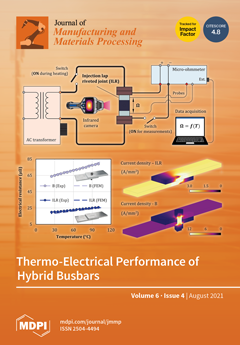Open AccessEditor’s ChoiceArticle
Laser Additive Manufacturing of Duplex Stainless Steel via Powder Mixture
by
Chengsong Cui, Louis Becker, Eric Gärtner, Johannes Boes, Jonathan Lentz, Volker Uhlenwinkel, Matthias Steinbacher, Sebastian Weber and Rainer Fechte-Heinen
Cited by 12 | Viewed by 3258
Abstract
Laser additively manufactured duplex stainless steels contain mostly ferrite in the as-built parts due to rapid solidification of the printed layers. To achieve duplex microstructures (ferrite and austenite in roughly equal proportions) and, thus, a good combination of mechanical properties and corrosion resistance,
[...] Read more.
Laser additively manufactured duplex stainless steels contain mostly ferrite in the as-built parts due to rapid solidification of the printed layers. To achieve duplex microstructures (ferrite and austenite in roughly equal proportions) and, thus, a good combination of mechanical properties and corrosion resistance, an austenitic stainless steel powder (X2CrNiMo17-12-2) and a super duplex stainless steel powder (X2CrNiMoN25-7-4) were mixed in different proportions and the powder mixtures were processed via PBF-LB/M (Laser Powder Bed Fusion) under various processing conditions by varying the laser power and the laser scanning speed. The optimal process parameters for dense as-built parts were determined by means of light optical microscopy and density measurements. The austenitic and ferritic phase formation of the mixed alloys was significantly influenced by the chemical composition adjusted by powder mixing and the laser energy input during PBF-LB/M. The austenite content increases, on the one hand, with an increasing proportion of X2CrNiMo17-12-2 in the powder mixtures and on the other hand with increasing laser energy input. The latter phenomenon could be attributed to a slower solidification and a higher melt pool homogeneity with increasing energy input influencing the phase formation during solidification and cooling. The desired duplex microstructures could be achieved by mixing the X2CrNiMo17-12-2 powder and the X2CrNiMoN25-7-4 powder at a specific mixing ratio and building with the optimal PBF-LB/M parameters.
Full article
►▼
Show Figures





